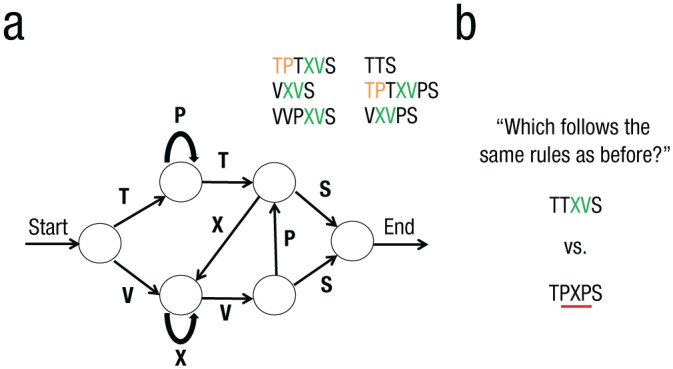Fig. 2.

Task assessing artificial grammar learning (Reber, 1967). A sample artificial grammar is shown in (a). The grammar (which is never directly observed by participants) dictates the order in which particular stimuli (in this case, letters) can occur in a sequence. To generate a sequence, one traces a path through the grammar, starting on the left and following the arrows. As a letter is encountered along the path, it is recorded as the next letter in the sequence. This is done until arriving at the “end.” Sample sequences of letters generated from this grammar are shown. In the exposure phase of the task, participants are exposed to sequences of stimuli generated from the artificial grammar. Following exposure, participants engage in a test phase (b) in which they make grammaticality judgments on novel sequences that either adhere to or violate the grammar. In the figure, letters are colored to illustrate how the rules of the grammar result in certain combinations of frequently occurring letter pairs or triplets. The red line signifies letter combinations that are inconsistent with the grammar and thus are ungrammatical.
